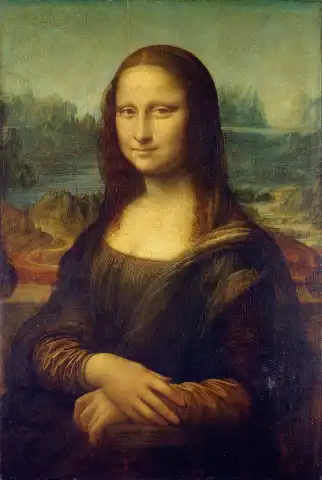

Hand painted reproductions of Elizabeth Jane Gardner Bouguereau
Elizabeth Jane Gardner Bouguereau: A Renowned American Painter of the 19th Century
Elizabeth Jane Gardner Bouguereau (1837–1922) was an American artist best known for her mastery in portraiture and figure painting. As one of the few women artists to achieve significant recognition in the 19th century art world, she became a prominent figure in the academic tradition, closely associated with the renowned French painter William-Adolphe Bouguereau, whom she later married. Her works continue to be admired for their refined technique, emotional depth, and lifelike representation of the human form.
Early Life and Education
Elizabeth Jane Gardner was born in 1837 in Exeter, New Hampshire, USA, into a family with a strong appreciation for the arts. As a young woman, she showed great promise as a painter, but in a time when opportunities for women in the arts were limited, she faced significant challenges. Determined to pursue her artistic aspirations, Gardner moved to Paris in the mid-1850s to study at the prestigious École des Beaux-Arts, the leading art academy in France.
During her time in Paris, Gardner studied under renowned artists such as François-Edouard Picot and Jean-Léon Gérôme, who were associated with the academic tradition of painting. Despite the significant gender barriers in place at the time, Gardner’s talent was quickly recognized, and she gained admission to the École des Beaux-Arts, where she became one of the first American women to study at the institution.
Her studies in Paris allowed Gardner to immerse herself in the flourishing art scene of the time, where she encountered the works of both classical and contemporary masters. The influence of the academic tradition, with its emphasis on realism, proportion, and technique, profoundly shaped her artistic style.
Artistic Development and Style
Elizabeth Gardner’s style was rooted in the academic tradition of 19th-century France, which emphasized realistic representation, technical precision, and the portrayal of the human figure with anatomical accuracy. Her works often feature figures of women and children, capturing moments of quiet grace and emotional depth. Gardner excelled in the use of light and shadow, creating depth and a sense of realism in her paintings that was unparalleled for a woman artist of her time.
Gardner’s portraits and figure paintings are particularly noted for their lifelike quality, with each subject meticulously rendered in exquisite detail. Her ability to capture the softness of skin, the texture of clothing, and the play of light on the human form became hallmarks of her style. Like her contemporaries in the academic tradition, she often painted in a highly polished, detailed manner, yet her works conveyed a subtle emotional undertone, revealing the inner thoughts and moods of her subjects.
One of Gardner’s most famous works is The Young Girl at the Piano (1874), which reflects her skill in portraying both the technical prowess of the human figure and the emotional nuance of her subject. In this painting, she captures a young woman at the piano, exuding a sense of tranquility and introspection. The exquisite details, particularly in the rendering of the fabric and light, demonstrate Gardner’s extraordinary ability to breathe life into her compositions.
Themes and Significance
Elizabeth Gardner Bouguereau’s art often focused on the themes of femininity, beauty, and the everyday lives of women. Many of her works feature women and children in serene, intimate settings, sometimes reflecting themes of innocence, motherhood, and introspection. Her ability to convey quiet emotion and the inner world of her subjects distinguishes her work from that of many of her male contemporaries.
Her style aligns closely with the broader academic tradition of realism, focusing on portraying the human form in a manner that emphasizes grace and natural beauty. The emotional depth of her figures, combined with the technical mastery of her technique, earned her recognition both in France and in the United States. Her work is particularly celebrated for its idealized yet emotionally resonant portrayal of women, capturing their strength and vulnerability with equal sensitivity.
Gardner’s connection to the French artist William-Adolphe Bouguereau, whom she eventually married, also played a significant role in her development. Bouguereau’s influence on her work is evident in her use of light, color, and an emphasis on the realistic rendering of the human body. As a woman in a male-dominated art world, Gardner had to overcome many obstacles, yet she became an established figure in the academic painting tradition, marking a significant achievement for women artists in the 19th century.
Achievements and Influence
During her career, Elizabeth Gardner Bouguereau achieved notable success, both in France and in the United States. She was one of the first women to be admitted to the Salon of Paris, the most prestigious art exhibition of the time, and she exhibited her work regularly there. Her success was a testament to her dedication to her craft and the recognition of her technical skill.
Gardner’s marriage to William-Adolphe Bouguereau in 1896 further solidified her standing within the art world, and she continued to exhibit her works until her later years. Her ability to navigate the challenges of being a woman artist in a time when female participation in the art world was limited is a significant part of her legacy. She helped pave the way for future generations of female artists who would follow in her footsteps.
Although she was overshadowed by the more famous Bouguereau, Elizabeth Gardner’s works remain highly regarded, particularly for their delicate portrayal of women and the technical mastery with which they were executed. Today, her paintings are considered an important part of the 19th-century academic tradition, and her legacy continues to inspire collectors and art historians alike.
Legacy
Elizabeth Jane Gardner Bouguereau’s legacy as a painter is marked by her contributions to the academic tradition and her role as one of the pioneering women artists of the 19th century. Her works, celebrated for their emotional depth, technical precision, and depiction of women, continue to be admired by art collectors and enthusiasts. Though her fame may have been overshadowed by her husband, William-Adolphe Bouguereau, her artistic achievements stand as a testament to her skill and determination.
Today, Gardner’s works are housed in various private collections and museums around the world, where they are treasured for their graceful depiction of the human figure and their subtle emotional resonance. Her legacy endures as an example of the remarkable achievements that women artists made in an era when their contributions were often overlooked.
Where to Find Reproductions of Elizabeth Jane Gardner Bouguereau’s Art
For those wishing to bring the elegance and emotion of Elizabeth Jane Gardner Bouguereau’s works into their own homes, POD (Painting On Demand) offers a selection of high-quality oil painting reproductions. These reproductions capture the beauty and subtle emotional depth of Gardner’s iconic paintings, allowing collectors and art lovers to experience her timeless artistry in their living spaces.
Imagine owning an original work of art by Elizabeth Jane Gardner Bouguereau, one of the greatest artists in history. At POD we offer you the opportunity to make this dream come true. We reproduce Elizabeth Jane Gardner Bouguereau's works down to the smallest detail, so you can enjoy them in your own home.
Our reproductions are made by experienced artists who use the best materials and techniques. We are dedicated to providing you with the highest quality works of art, which will bring joy and inspiration to your family for generations.












































